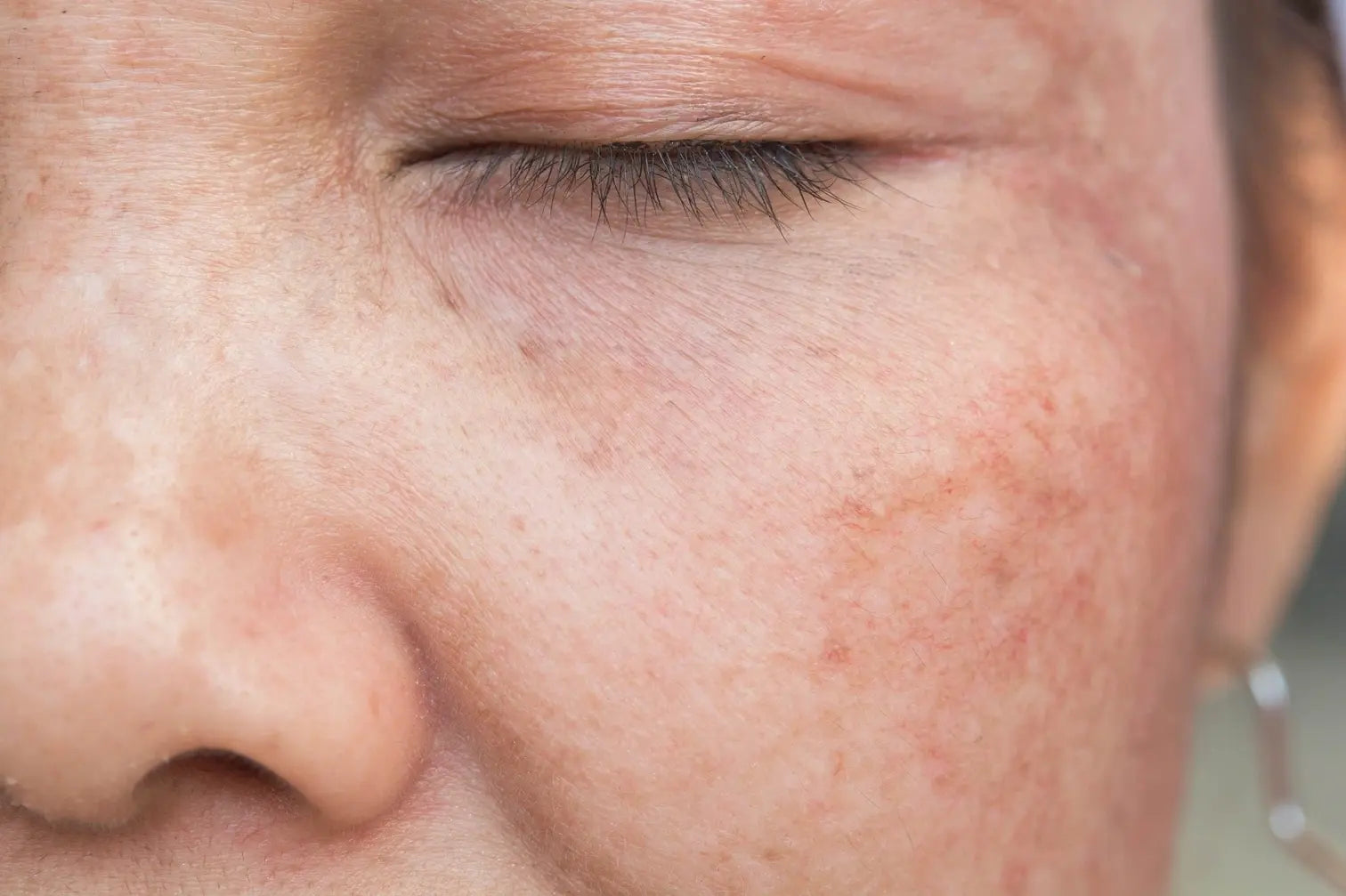How can you avoid the onset of crepey skin?
- Consumption of alcohol [2]
- Smoking [3]
- Stress, or an increase of cortisol in the body [4]
- Weight fluctuation or inability to eat a balanced diet [2]
- Lack of sleep [5]
How can you avoid the onset of crepey skin?
- Consumption of alcohol [2]
- Smoking [3]
- Stress, or an increase of cortisol in the body [4]
- Weight fluctuation or inability to eat a balanced diet [2]
- Lack of sleep [5]
How do you improve skin texture?
How do you improve skin texture?
How do you stop crepey skin from worsening?
How do you stop crepey skin from worsening?
Can crepey skin be reversed?
- Ultrasound
- Biostimulatory fillers
- Topical alpha hydroxy acids
- Topical peptides
- Topical retinol
- Topical allantoin
Can crepey skin be reversed?
- Ultrasound
- Biostimulatory fillers
- Topical alpha hydroxy acids
- Topical peptides
- Topical retinol
- Topical allantoin
Can topical supplements be used to fix crepey skin?
Can topical supplements be used to fix crepey skin?
Does upping water intake play a role in preventing or treating crepey skin?
Does upping water intake play a role in preventing or treating crepey skin?
Prioritize Your Skin Health
Prioritize Your Skin Health
- By reducing exposure to the causes of crepey skin, such as UV exposure, you can prevent or hinder crepey skin from appearing and maintain healthy skin.
- Antioxidative compounds as part of a daily diet can help minimize crepey skin from developing further and slow down the presence of loose skin.
- Increasing water intake and general moisturizing of the skin can help prevent the development of crepey skin.
- Dermatological treatments such as ultrasound, biostimulatory fillers, and fractional laser treatment have been shown to be effective at treating crepey skin.
- OneSkin's Topical Supplements are clinically validated to improve skin texture, barrier function, and hydration [7, 8, 12] OneSkin's OS-01 peptide is scientifically proven to promote collagen and hyaluronic acid production in skin, along with increasing skin's epidermal thickness. [7, 8]
- By reducing exposure to the causes of crepey skin, such as UV exposure, you can prevent or hinder crepey skin from appearing and maintain healthy skin.
- Antioxidative compounds as part of a daily diet can help minimize crepey skin from developing further and slow down the presence of loose skin.
- Increasing water intake and general moisturizing of the skin can help prevent the development of crepey skin.
- Dermatological treatments such as ultrasound, biostimulatory fillers, and fractional laser treatment have been shown to be effective at treating crepey skin.
- OneSkin's Topical Supplements are clinically validated to improve skin texture, barrier function, and hydration [7, 8, 12] OneSkin's OS-01 peptide is scientifically proven to promote collagen and hyaluronic acid production in skin, along with increasing skin's epidermal thickness. [7, 8]
- https://pubs.rsc.org/en/content/articlelanding/2014/FO/C4FO00280F
- https://www.ncbi.nlm.nih.gov/pmc/articles/PMC6081583/
- https://www.ncbi.nlm.nih.gov/pmc/articles/PMC6715121/
- https://www.ncbi.nlm.nih.gov/pmc/articles/PMC4082169/
- https://www.medicalnewstoday.com/articles/307334
- https://www.ncbi.nlm.nih.gov/pmc/articles/PMC8347214/
- https://blog.providence.org/archive/how-to-prevent-and-treat-damaged-crepey-skin
- https://www.ncbi.nlm.nih.gov/pmc/articles/PMC4277239/
- Based on data from clinical studies and/or lab studies conducted on human skin samples, 3D skin models, and skin cells in the OneSkin lab. Explore more at oneskin.co/claims
- https://www.nature.com/articles/s41514-023-00109-1
- https://www.doctorshealthpress.com/skin-care-articles/crepey-skin-causes-natural-treatment/
- https://onlinelibrary.wiley.com/doi/epdf/10.1111/jocd.16242
- https://pubs.rsc.org/en/content/articlelanding/2014/FO/C4FO00280F
- https://www.ncbi.nlm.nih.gov/pmc/articles/PMC6081583/
- https://www.ncbi.nlm.nih.gov/pmc/articles/PMC6715121/
- https://www.ncbi.nlm.nih.gov/pmc/articles/PMC4082169/
- https://www.medicalnewstoday.com/articles/307334
- https://www.ncbi.nlm.nih.gov/pmc/articles/PMC8347214/
- https://blog.providence.org/archive/how-to-prevent-and-treat-damaged-crepey-skin
- https://www.ncbi.nlm.nih.gov/pmc/articles/PMC4277239/
- Based on data from clinical studies and/or lab studies conducted on human skin samples, 3D skin models, and skin cells in the OneSkin lab. Explore more at oneskin.co/claims
- https://www.nature.com/articles/s41514-023-00109-1
- https://www.doctorshealthpress.com/skin-care-articles/crepey-skin-causes-natural-treatment/
- https://onlinelibrary.wiley.com/doi/epdf/10.1111/jocd.16242



